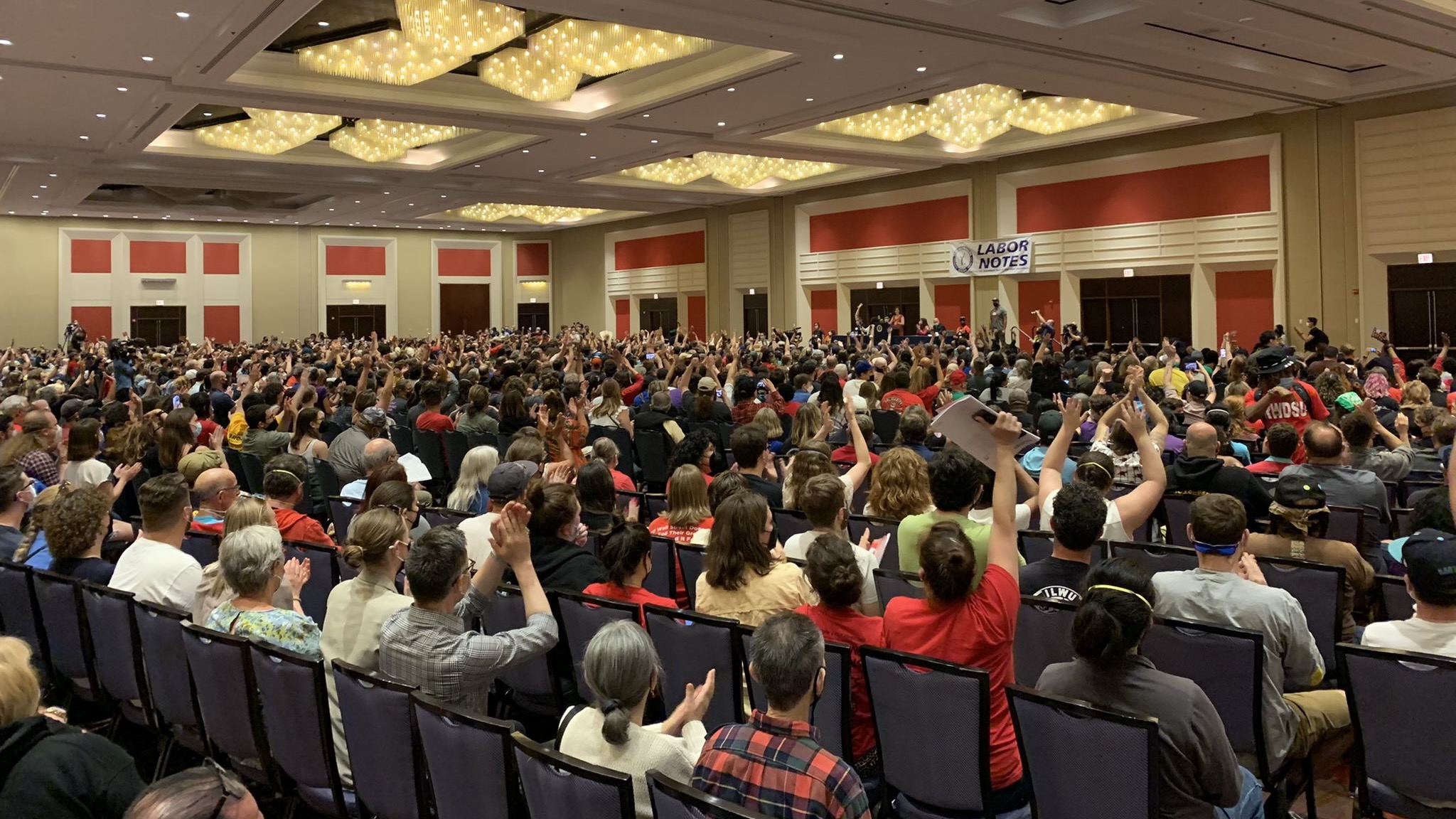Over 4,000 trade unionists and workers gathered in Chicago for the Labor Notes conference from June 17-19. The US-based network for labor activists and unionized workers which was founded in 1979, held its last national conference four years ago. In this period, the US labor movement has undergone necessary revitalizations and transformations in response to the composition of the workforce and socioeconomic reality in the country.
Within the context of a US economy that is built on service work rather than manufacturing, with 80% of the GDP represented by the service sector, workers in the last period won major organizing victories within industry giants Starbucks and Amazon.
The pandemic also left its mark on labor organizing. With the presence of a larger social safety net during the pandemic, workers began leaving underpaid, toxic workplaces en masse. Called a “labor shortage” in the mainstream media and the “Great Resignation” among labor organizers, workers were able to use threats of quitting as leverage to demand more from their bosses. In late 2021, workers around the country engaged in large militant strike actions, representing the diversity of the working class from Columbia graduate students to coal miners.
It is in this vibrant and dynamic context that workers from across the world came together in Chicago.
“Labor Notes was a vibrant and motivating experience for the labor community. There was so much to learn and take away, and my partners and I are excited to apply our new knowledge to our local organizing efforts,” lead Starbucks worker and organizer Kylah Clay told Peoples Dispatch.
Organizers around the country were able to exchange tactics and ideas, in an effort to further strengthen the nationwide labor movement. In a panel titled “A Union Brews at Starbucks”, Clay, an organizer with Starbucks Workers United, told the audience how she and her workers were forced to attend “captive audience meetings”, which are mandatory meetings in which management forces workers to hear from anti-union propagandists. Clay and her fellow workers would bring in “captive audience bingo” sheets to ridicule the union-busters and strengthen bonds amongst workers.
19-year-old lead Starbucks worker-organizer Laila Dalton, who was fired for her organizing efforts, described how Starbucks workers persevered despite retaliation from the company. “Right now, it’s a war. And we’re gonna lose battles, we’re gonna win battles and people are gonna get hurt,” Dalton said. “People are gonna get fired…just us knowing what we’re going into, and knowing that we will have to fight, this will take time. We will lose some battles, but at the end, as long as we get back up, we continue, we will win this war.”
In a panel titled “Amazon Workers on the Move”, Amazon Labor Union (ALU) worker and organizer Angelika Maldonado described the obstacles that ALU organizers faced. “Amazon, they purposely and systematically made the warehouse…so it would be impossible for us to make a union. You cannot expect people who work ten hour shifts for days consecutive, or twelve hour shifts, to come back to a warehouse they live miles away from, and have to cross bridges and bodies of water to organize a warehouse of 8,000 people. It seems impossible right? And it would seem impossible to the corporate people who don’t understand the dedication that we have as folks who need what we’re fighting for.”
Maldonado explained how organizers work to overcome these obstacles. Maldonado described in detail how she learned to open up and be vulnerable about being a single mom, and built community through the sharing of food, in order to organize a skeptical coworker.
“[I told my coworker], I’m a single parent to a four-year old. I’m not here on my off day to play games and play with anyone’s head about what we need in this warehouse,” Maldonado said. “I’m here sacrificing time away from my four-year-old and I’m missing quality time that could be given to him educating my coworkers and sharing knowledge about the things that we’re battling within the company. And when I said that to her, she took a little pause…And she looked at me and she said, you know what, I’m kind of late for my shift, but I’ll come back and talk to you.”
Parul Koul, Executive Chair of the Alphabet Workers Union (AWU) which organizes workers in tech giant Google, attended the conference alongside a contingent of 45 from the union as a whole.
Koul told Peoples Dispatch, “It was my first time attending the conference.” She continued, “It’s a very exciting time for labor. Union popularity is at its highest in decades, at its highest since probably the late fifties or sixties. It’s an incredible opportunity to organize, especially considering the last year, into the pandemic and the amount of wage pressure there is on employers. The great resignation phenomenon, which especially in tech, was very, very prevalent…it’s really opened an opportunity for workers to rise up and fight back and win concessions from bosses that didn’t seem possible just a few years ago.”





